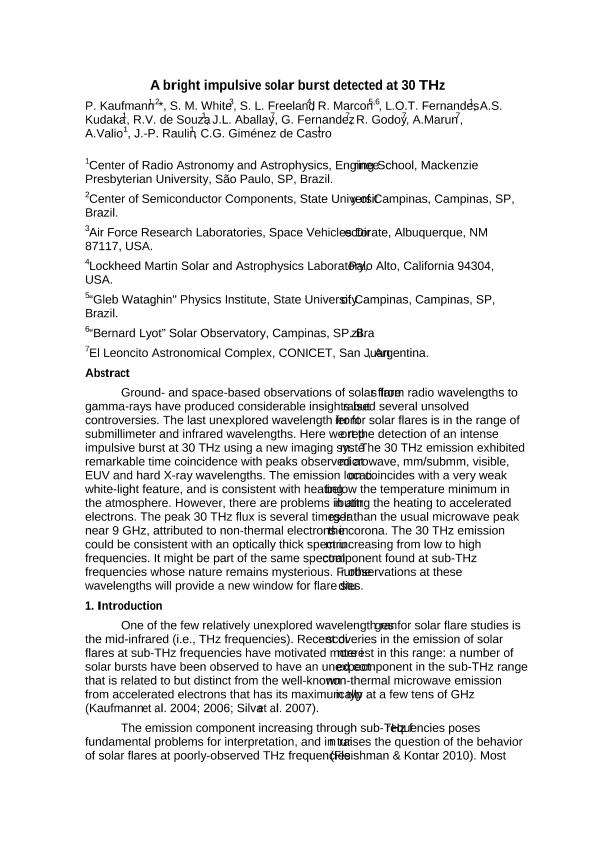Artículo
A Bright Impulsive Solar Burst Detected at 30 Thz
Kaufmann, P.; White, S. M.; Freeland, S. L.; Marcon, R.; Fernandes, L. O. T; Kudaka, A. S.; de Souza, R. V.; Aballay, Jose Luis ; Fernandez, German Enzo Leonel
; Fernandez, German Enzo Leonel ; Godoy, Rodolfo Alfredo
; Godoy, Rodolfo Alfredo ; Marun, Adolfo Hector
; Marun, Adolfo Hector ; Valio, A.; Raulin, J. P.; Gimenez de Castro, Carlos Guillermo
; Valio, A.; Raulin, J. P.; Gimenez de Castro, Carlos Guillermo
 ; Fernandez, German Enzo Leonel
; Fernandez, German Enzo Leonel ; Godoy, Rodolfo Alfredo
; Godoy, Rodolfo Alfredo ; Marun, Adolfo Hector
; Marun, Adolfo Hector ; Valio, A.; Raulin, J. P.; Gimenez de Castro, Carlos Guillermo
; Valio, A.; Raulin, J. P.; Gimenez de Castro, Carlos Guillermo
Fecha de publicación:
23/04/2013
Editorial:
IOP Publishing
Revista:
Astrophysical Journal
ISSN:
0004-637X
Idioma:
Inglés
Tipo de recurso:
Artículo publicado
Clasificación temática:
Resumen
Ground- and space-based observations of solar flares from radio wavelengths to gamma-rays have produced considerable insights but raised several unsolved controversies. The last unexplored wavelength frontier for solar flares is in the range of submillimeter and infrared wavelengths. Here we report the detection of an intense impulsive burst at 30 THz using a new imaging system. The 30 THz emission exhibited remarkable time coincidence with peaks observed at microwave, mm/submm, visible, EUV, and hard X-ray wavelengths. The emission location coincides with a very weak white-light feature, and is consistent with heating below the temperature minimum in the atmosphere. However, there are problems in attributing the heating to accelerated electrons. The peak 30 THz flux is several times larger than the usual microwave peak near 9 GHz, attributed to non-thermal electrons in the corona. The 30 THz emission could be consistent with an optically thick spectrum increasing from low to high frequencies. It might be part of the same spectral component found at sub-THz frequencies whose nature remains mysterious. Further observations at these wavelengths will provide a new window for flare studies.
Archivos asociados
Licencia
Identificadores
Colecciones
Articulos(CASLEO)
Articulos de COMPLEJO ASTRONOMICO "EL LEONCITO"
Articulos de COMPLEJO ASTRONOMICO "EL LEONCITO"
Citación
Kaufmann, P.; White, S. M.; Freeland, S. L.; Marcon, R.; Fernandes, L. O. T; et al.; A Bright Impulsive Solar Burst Detected at 30 Thz; IOP Publishing; Astrophysical Journal; 768; 2; 23-4-2013; 1-9
Compartir
Altmétricas



